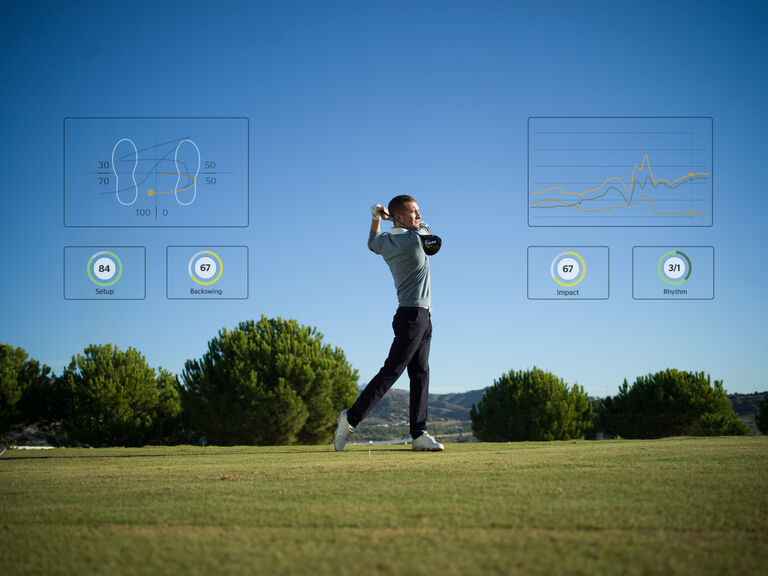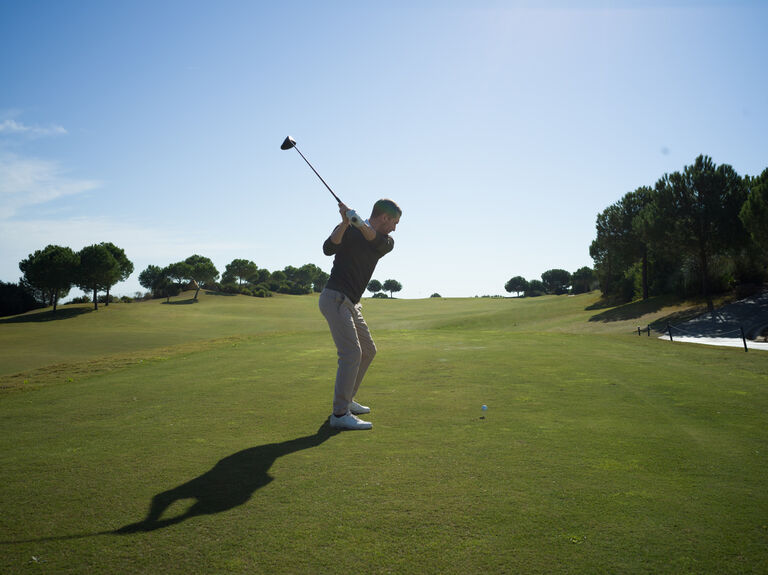Video analysis in golf swing training
Why video analysis is crucial to sports improvement
Sports people have always been the object of all pursuits visual, be it in pictures, paintings, films or even sculptures.
The dedicated athlete exerting themselves out on the playing field – any playing field, for that matter, including golf courses – is simply too tempting to the eye as to withstand capturing them on paper, film, or even in clay. In doubt? Just think of how many Greek statues you remember portraying scribblers hunched over a desktop compared to wrestlers, javelin throwers or fencers.

From ancient Sparta to moving images in sports
If that was true 2000 years ago, it is even more true in an age where everyone films everything. And while we don’t quite know whether the lads of ancient Sparta learnt any fencing techniques from all those images surrounding them (other than maybe look stunning in the mirror), we do know, all jesting aside, that today’s sports images really teach you good things, especially the moving images: you can improve substantially in your golf performance using video analysis.

But is it for everyone? Of course not. If you keep raking divots the size of Southern Texas out of the grass every time you perform a golf swing, maybe video analysis is a bit of an overkill for you. Don’t go video analyzing for the sake of the analysis – go back and practice, if necessary in a shed on an old piece of carpet, until you have the basic technique down. Same goes for an aspiring kid grasping the club for the first time. The rule of thumb here is: be old enough to listen and yet young enough to be able to actually hone your technique in the wake of the feedback.
Be ready for feedback
Which still leaves quite a large age bracket able to enjoy the very tangible benefits of video analysis. First off, the video is objective, sometimes painfully so. A swing that felt great to you while you were in the thick of executing it, can quickly become something rather embarrassing when you rewatch it with an experienced coach at your side. Still, after the first pangs of discomfort, video is one of the best ways possible to see eye to eye with your coach. There are, however, a few points to observe to get the most out of the video analysis potential: since the video captures entire sequences instead of snapshots, it is very tempting to try and correct everything at once. That’s usually not a terribly good idea – even ambitious athletes can only take in so much of a feedback at any given time.

Strike up a movement strategy
So have an intention in mind (or resort to a video coach with such an intention): concentrate on those areas in training that you stand a realistic chance of improving rather soon. Look for the real meaningful sequences, the really insightful values to analyze. In fact, video analysis is particularly powerful, if you can compare yourself to others, ideally so many others that something of an ideal line of movement is forming – then you can strike up a movement strategy to follow that line in future training. It is here that methods of artificial intelligence come into play.
As Carl Valle, author of “simplyfaster.com” says: “Never perform manual video analysis when technology can automate the process.”
After all, there aren’t that many ways of legal doping left in golf – what other means do you have, once you are firm in the movement in principle, have exploited most of your talent and really put in the hours on the golf course? Go figure, go watch yourself, go play better!


